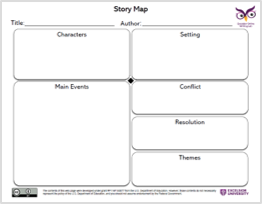
This is an "owlet" - a customized view of the Excelsior Online Writing Lab.
An Example Owlet
Demonstrating how an Owlet can be used as an OWL microsite
Creating a Story Map
- Creating a Story Map Home
- Secure Password
- Online Writing Lab
- The Writing Process
- Research & Citations
- Research
- Citation & Documentation
- Rhetorical Styles
- Argument & Critical Thinking
- Online Writing & Presentations
- Grammar Essentials
- Punctuation
- Parts of Speech
- Sentence Structure
- 20 Most Common Writing Errors
- Comma Splice
- Comma After Introductory Element
- Unnecessary Comma
- Missing Comma with Nonrestrictive Element
- Missing Comma in Compound Sentence
- Misplaced Modifier
- Dangling Participle
- Pronoun Reference
- Pronoun Agreement
- Pronoun Error: I vs. Me
- Sentence Fragment
- Run-On Sentences
- Faulty Sentence Structure
- Documentation Error
- Wrong Word
- Verb Tense Shift
- Capitalization
- Apostrophe Errors
- Hyphens
- Spelling
- Try It Out
- Time to Write
- Avoiding Plagiarism
- Academic Writing 101
- Writing at the Graduate Level
- Writing in the Disciplines
- Writing for Your Career
- Writing Refresher
- Development
- ———————–
- Online Reading Comprehension Lab
- OWL Educator Resources
- Hoot! The Excelsior University OWL Blog
- About Section
- ———————–
- OWL Welcome
- OWL Register
- OWL Registered
- OWL Login
- OWL Account
- OWL Password
- OWL Feedback
- OWL Logout
- Owlet
- Saved Owlets
- Reckoning
- Writing Activities




